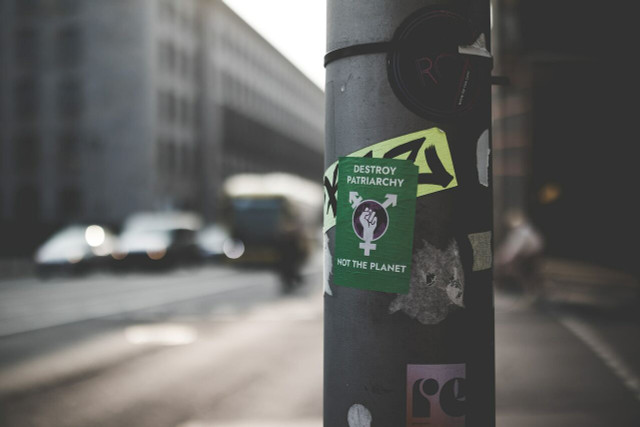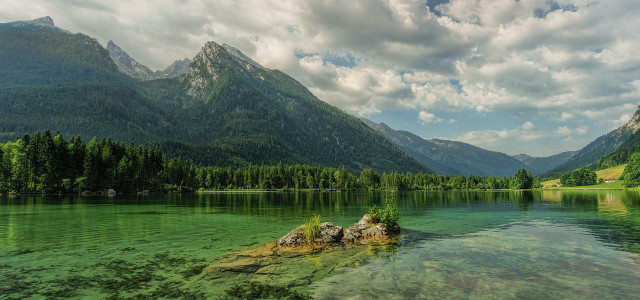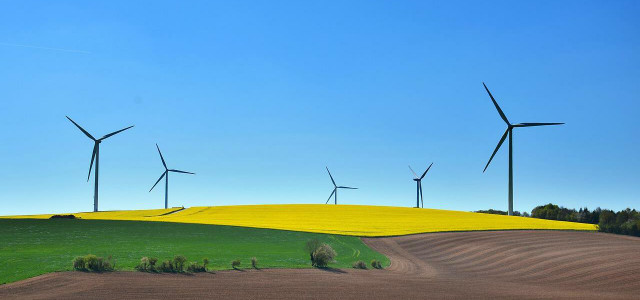Deep ecology proposes that there are no boundaries between humans and the rest of nature — and that all living things are of equal value. We'll explain the main ideas as well as criticisms of the movement.
Norwegian philosopher Arne Næss started the deep ecology movement in 1972. It is probably most easily defined by its two underlying ideas:
- There must be a shift away from anthropocentrism to ecocentrism. This means seeing every living thing as having inherent value — instead of humans only having inherent value and all other beings just existing for us to use and exploit.
- Humans are part of nature rather than superior and apart from it. So when we take care of and protect nature, we should do it just as if we were protecting our own family or selves.
Since its inception, deep ecology has strongly influenced the environmentalist movement.
The Definitions of Deep Ecology
An official definition of deep ecology by Britannica reads:
“environmental philosophy and social movement based in the belief that humans must radically change their relationship to nature from one that values nature solely for its usefulness to human beings to one that recognizes that nature has an inherent value”. The dictionary also mentions that it can be seen as a so-called ecosophy — a combination word of ecology and philosophy.
Næss himself, in a 1986 paper, defined deep ecology as “a group of philosophical positions adhering to a platform of eight fundamental principles” — which we will lay out in the next section.
Deep Ecology: The 8 Principles Explained

(Foto: CC0 / Pixabay / cocoparisienne)
The central tenet of deep ecology that Næss presented is the rejection of anthropocentrism. Næss and the American philosopher George Sessions settled on eight essential principles for deep ecology in the mid-1980s. These eight principles are:
- Inherent Value — The well-being of human and nonhuman life on earth has intrinsic value.
- Diversity — Richness and diversity of life forms contribute to realizing the value of life and are also values themselves.
- Vital Needs — Humans have no right to reduce this richness and diversity except to satisfy vital needs.
- Population — The flourishing of human life and cultures is compatible with a substantial decrease in the human population. The flourishing of nonhuman life requires such a decrease.
- Human Interference — The present human interference with the nonhuman world is excessive, and the situation is rapidly worsening.
- Policy Change — Policies must therefore be changed. These policies affect basic economic, technological, and ideological structures.
- Quality of Life — The ideological change is mainly appreciating life quality rather than adhering to an increasingly higher standard of living.
- Obligation of Action — Those who subscribe to the preceding points have an obligation directly or indirectly to try to implement the necessary changes.
In their book “Deep Ecology: Living As If Nature Mattered“, Sessions and sociologist Bill Devall analyse those principles further.
"Shallow Ecology" vs. Deep Ecology



(Foto: CC0 / Unsplash / Larm Rmah)
Næss conceptualizes deep ecology as the antithesis to what he sees as the other, more common, type of environmentalism: the “shallow ecological movement”. This type of environmentalism, he argued, is concerned with finding technological solutions to the issues of our time — mainly for the benefit of the “health and affluence of people in the developed countries.” The fight against pollution, for recycling, or improved energy efficiency are examples of that: All certainly make an impact, but to Næss, a much more fundamental shift in our conceptualization of our role on Earth is what’s necessary.
In contrast to this, Næss calls the goals and ideas of deep ecology “long-range”. Their basic premises are that all life on this planet has a right to exist, and that there are no ‘superior’ or ‘inferior’ types of living beings. According to him, deep ecology is — additionally to practical issues like recycling — concerned with “diversity, complexity, autonomy, decentralization, symbiosis, egalitarianism and classlessness.”
He outlines seven markers that differentiate deep from shallow ecology. Deep ecology …
- doesn’t see humans as “in” the environment but rather as part of a so-called total-field image: where the relations between organisms in a biosphere are intrinsically part of what the organisms are — if the relations change, so does the definition of the organism.
- accepts biospherical egalitarianism — in principle: while humans are equal to all other life on Earth, he writes, “any realistic praxis necessitates some killing, exploitation, and suppression.”
- sees diversity and symbiosis as crucial ecological principles that extend into the human realm. He says that deep ecologists would be “opposed to the annihilation of seals and whales as much as to that of human tribes and cultures.”
- is anti-class. Just as we exploit each other within human society, humanity as a whole exploits the rest of nature. By paying attention to the aforementioned three points, that exploitation can be reigned in.
- fights against pollution and resource depletion — while keeping in mind that sometimes the steps taken in this fight can increase inequalities in other fields. The price for certain goods might for example increase when they are produced fairly, which could in turn increase class differences in the buyers’ society.
- follows the complexity-not-complication principle. Systems in the biosphere are complex, and for a very good reason: Take any factor away and they stop working as perfectly as they do. Applied to humans, this would lead to division of labor, rather than fragmentation of labor. Næss argues that instead of complicated but precise prognosis of the future, we need “more clarification of possibilities”.
- supports decentralization and local autonomy. Næss states that a living being is roughly as vulnerable as it can be externally influenced — meaning that the more self-sufficient an individual or a system is, the better its chances in surviving. For human communities specifically, this implies that stronger local self-government and independence of imported materials and labor makes them less vulnerable.
Deep Ecology in Practice



(Foto: CC0 / Unsplash / Victoria Shes)
Næss stressed that to follow the deep ecological movement, you don’t have to adhere to a strict set of rules. Just the opposite — with respect to the different religious, financial and social backgrounds of all people on Earth, everyone is to find their own way of applying the eight principles. For most people, an easy application could for example be to live in a more environmentally conscious way, such as reducing your carbon footprint.
Followers of deep ecology could therefore make changes to how they live their everyday lives to combat climate change. These changes include avoiding plastic, eating plant-based diets, avoiding food waste, and supporting environmental organizations that advocate for protecting the environment and tackling climate change.
Also interesting: The Gaia Hypothesis: What Does It Mean for Life on Earth?
This open and broad approach also invited criticism: How can meaningful steps be taken if there is no concrete plan of action?
Historical examples
In the 1980s, the Earth First! group ascribed loosely to the ideas of deep ecology, but did so in a more radical way. They practiced direct action, such as tree sitting and road blockades, and occupied logging sites to protect forests from deforestation. Their civil disobedience in form of sabotage brought further scrutiny to deep ecology.
The Earth Liberation Front, another decentralized activist group, brought more negative press to deep ecology. They were also frustrated by humans’ lack of initiative and activity in action against climate change and practiced direct action in the form of sabotage, even including arson to further their goals.
Criticisms



(Foto: CC0 / Pixabay / jpeter2)
Eurocentrism
The scholars Ramachandra Guha and Joan Martinez-Alier criticize a eurocentric bias of deep ecology. They argue that it approriates Eastern traditions and spirituals beliefs, all while denying agency to non-Western peoples. They point out that the movement does not recognize the true significance of overconsumption in the Global North specifically.
Read more on it: Global South and Global North: What Are They & What’s the Conflict?
Utopianism
Jonathan Bate and others have criticized deep ecology as being utopian, unrealistic and impractical. Some argue that if the ideas of deep ecology were t be implemented, they might “permit totalitarian sociopolitical regimes”. This also ties in with the first point of criticism, eurocentrism: The vision of “pristine wilderness” deep ecology evokes is, according to the critics, a fundamentally Western and preservationist one. It could accordingly be harmful to traditional societies, who directly depend on their natural surroundings for food and clothing, for example.
Non-human interests
The movement is faulted for assuming that parts of nature — plants, for example — have their own interests. Critics believe that the interests that deep ecologists assign to nature, such as growth and survival, are actually only human interests. Other people criticize the notion that the intrinsic value of nature exists independently of humanity’s recognition of it. Those who hold this view argue that the inherent value of nature does not go any further than humanity’s appreciation of it.
Misanthropy
Deep ecology could be understood to mean that humans are fundamentally a threat to the planet. Sociologist Murray Bookchin and others have there criticized the philosophy as misanthropic — basically, anti-human. They argue that not humans categorically are the issue, but rather the capitalistic and patriarchal structures we uphold right now.
Ecofeminism and Deep Ecology



(Foto: CC0 / Unsplash / Moises Gonzalez)
Both ecofeminism and deep ecology criticize the current relationships between humans and the Earth. Ecofeminism, however, focuses more on androcentrism (emphasizing male perspective over all others) as the root of social as well as environmental problems. Ecofeminists argue that the social dominance by men must be abolished for there to be environmental justice.
Deep ecologists sometimes criticize ecofeminism as focused too much on the injustices between sexes and genders.
Read more:
- Human-Environment Interaction: Definition & Examples
- Black Plastics: Why Are They So Bad for the Environment?
- These 6 Foods are the Worst for the Environment
Do you like this post?









